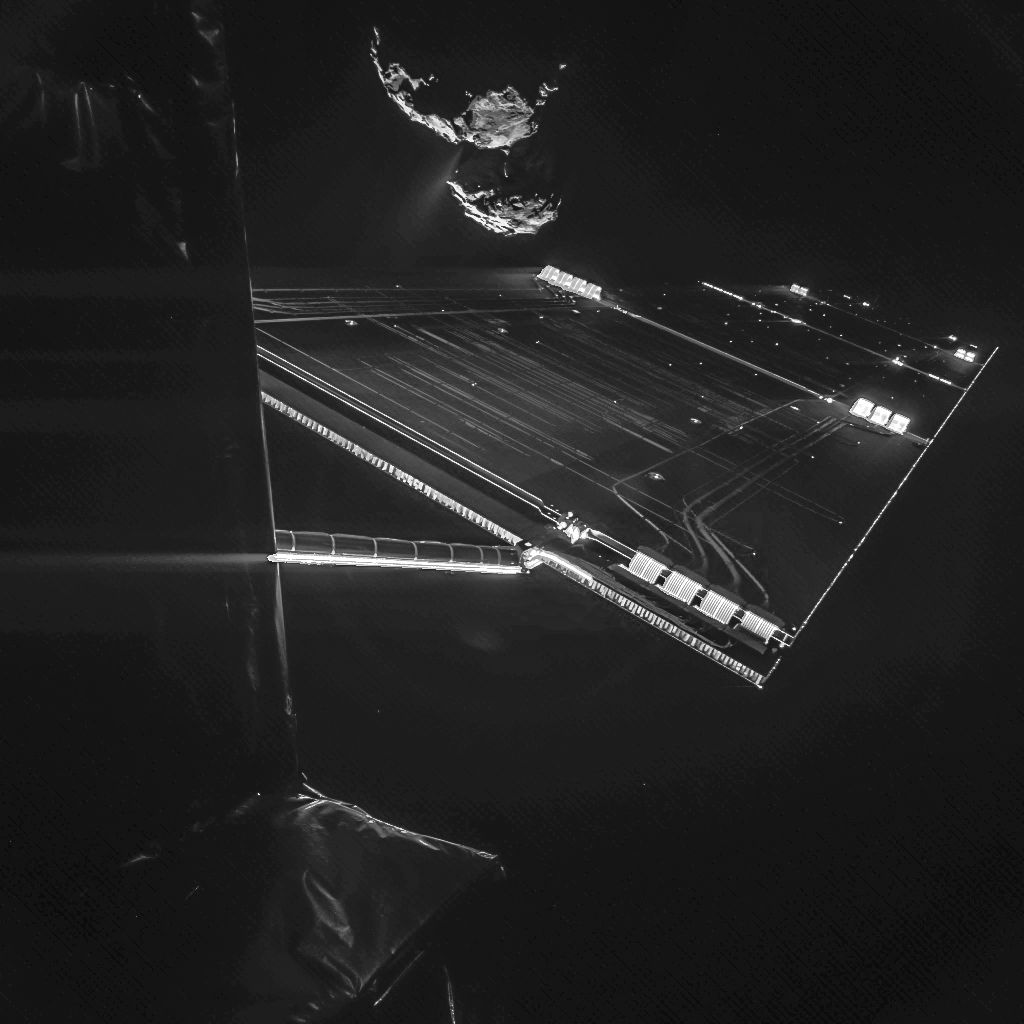The Philae spacecraft has a tough job ahead of it on November 12: it is slated to make the first landing on a comet’s surface. Riding piggyback on the Rosetta spacecraft, all indications are it is in good health and ready for the job; the team has even been taking the time for Philae to image spacecraft “selfies” with its target, Comet 67P/Churyumov–Gerasimenko, in the background.
And Rosetta will also be working hard, as the animation above shows us with the various maneuvers the spacecraft will be required to send Philae to the surface. Read more about these orbital changes below, as well as details of a contest to name the comet’s landing site.
As you can see in the animation, Rosetta starts in a 19 kilometer (11.8 mile) orbit, then moves down to the 10 km (6.2 mile) mapping orbit that it is right now.
Rosetta then does some maneuvers to get ready to send Philae to the surface, including a trajectory change about 2-3 hours before Philae’s landing. Rosetta will be about 22.5 km (14 miles) from the comet during the pre-separation phase. Then, the latter part of the animation shows Rosetta moving around to orbits ranging between 20 km and 50 km (12.4 miles and 18.6 miles) through December.
Meanwhile, here’s another way that certain people can get involved in the mission: the European Space Agency has a naming contest for the prime landing site!
“The rules are simple: any name can be proposed, but it must not be the name of a person,” ESA stated. “The name must be accompanied by a short description (up to 200 words) explaining why this would make the ideal name for such an historic location.”
Full contest rules and details are available here. Hurry as the deadline is Oct. 22!

